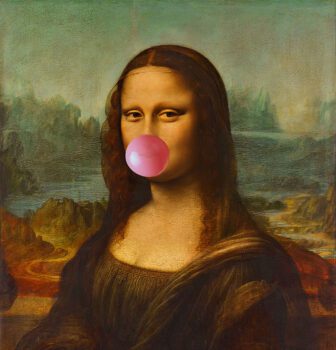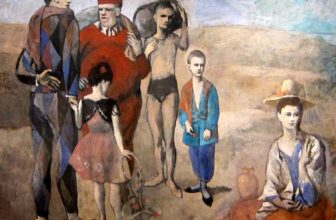The Mona Lisa: Praise, Critique, and the Myth of a Masterpiece
In the hushed halls of the Louvre Museum in Paris, behind bulletproof glass and under a watchful eye of security, hangs one of the most famous paintings in the world: Leonardo da Vinci’s Mona Lisa. She is neither grand in scale nor lavish in color. And yet, day after day, millions flock to glimpse her enigmatic smile. For centuries, art critics, historians, writers, and the general public have attempted to decode her expression, contextualize her appeal, and either praise or critique her aura. But what makes Mona Lisa so special? Why is she universally acknowledged, even worshipped, as the pinnacle of Renaissance art?
This is a story not just of a painting, but of how meaning is built, how criticism can elevate, and how mystique sustains greatness.
The Birth of an Icon
Painted between 1503 and 1506 (though some believe da Vinci worked on it until 1517), the Mona Lisa is believed to be a portrait of Lisa Gherardini, a Florentine woman married to merchant Francesco del Giocondo. The painting was a private commission, yet Leonardo never delivered it to the client. Instead, he carried it with him throughout his life, including to France, where he died in 1519.
Centuries later, it would hang in the French royal collection and eventually become property of the Republic. However, it wasn’t until the 19th century that the painting began to gain widespread critical attention. Before then, Leonardo’s Last Supper and Vitruvian Man were often considered more culturally significant.
So how did this modest portrait take on the status of divine artifact?
What Have Art Critics Said About the Mona Lisa?
Over the centuries, critics have analyzed every aspect of the Mona Lisa , from the brushwork and background to the sitter’s smile. Here’s how commentary on the painting has evolved:
1. Giorgio Vasari – The Early Praise
In the 16th century, Giorgio Vasari, an Italian painter and writer, described the Mona Lisa in his book Lives of the Artists, calling it a marvel of realism. He noted:
“Her smile was so pleasing that it seemed divine rather than human, and those who saw it were amazed to find that it was as alive as the original.”
Though Vasari never saw the painting himself, his commentary helped cement early admiration for Leonardo’s lifelike rendering.
2. 19th Century Romanticism – Walter Pater
The English essayist Walter Pater contributed to the painting’s mythical status in his 1869 essay, describing the sitter as:
“Older than the rocks among which she sits; like the vampire, she has been dead many times, and learned the secrets of the grave.”
Pater’s poetic interpretation moved the painting beyond technique, framing it as a symbol of eternal feminine mystery. Critics from the Romantic and Symbolist periods would follow in his footsteps, painting the Mona Lisa as a work beyond comprehension, almost spiritual in power.
3. 20th Century Formalist and Psychoanalytic Critics
In the 20th century, scholars like Sigmund Freud interpreted the Mona Lisa through a psychoanalytic lens, suggesting that Leonardo’s rendering of Lisa’s expression reflected his own subconscious and maternal attachments. Formalist critics, on the other hand, focused on technique, praising Leonardo’s use of sfumato, the delicate layering of tones that creates soft transitions between colors.
The art historian Kenneth Clark once wrote:
“Leonardo’s Mona Lisa remains the supreme example of portraiture: expressive yet restrained, human but idealized. It is what every painter strives for but few approach.”
The Likes and Dislikes: A Divided Audience
Though the art world has often lauded the Mona Lisa, public opinion is far more diverse.
Why People Love the Mona Lisa
The Enigmatic Smile
Perhaps the most talked-about feature in the history of art, Lisa’s smile seems to change with perspective and mood. Some describe it as tender, others see it as smug or haunting. This ambiguity invites endless speculation and engagement.
The Technique
Even casual observers notice the ethereal quality of the painting. The sfumato technique and the absence of hard lines give her face a lifelike, almost breathing quality. The illusion of depth and realism was groundbreaking in the early 1500s.
The Mystery
Who is she? Why does she smile like that? What is she thinking? These unanswered questions turn viewers into detectives, creating an interactive experience.
The Story of the Theft
In 1911, the painting was stolen from the Louvre by an Italian handyman who believed the masterpiece should be returned to Italy. The event sparked international media coverage, elevating the painting to household fame. Ironically, her absence made her legendary.
Why Some Dislike the Mona Lisa
Underwhelming Size
Many first-time viewers are surprised to discover that the painting is quite small (77 cm × 53 cm). After years of media hype, some find the actual experience anticlimactic.
Overrated Reputation
Some critics and viewers argue that the painting’s fame is disproportionate to its artistic merit. Detractors might say, “It’s a good painting, but there are many other portraits just as impressive.”
Crowds and Commercialization
The massive crowds around the painting, combined with the commercial exploitation of her image (on mugs, T-shirts, magnets), have diluted the experience for some visitors. The painting feels more like a celebrity than a sacred object.
The Psychology of Fame: Why Is the Mona Lisa So Highly Rated?
Understanding the painting’s status requires looking beyond brushstrokes and into the human psyche.
1. The Power of Mystery
Humans are hardwired to seek answers. When something defies easy explanation, like the Mona Lisa’s expression or origins, it becomes irresistible. Leonardo’s refusal to title or explain the painting only intensified its allure.
2. Scarcity and Exclusivity
There’s only one original Mona Lisa, and it’s in one location. This scarcity heightens its perceived value. Combine that with its historical journey, its theft, and recovery, and you get a painting that feels sacred.
3. Celebrity Culture
Just as certain individuals become icons due to a confluence of talent, timing, and media attention, so too do artworks. The Mona Lisa was thrust into the limelight at a time when media could carry her fame globally. She became the face of fine art itself.
4. Reinforcement by Institutions
From the Louvre to textbooks to Hollywood movies, institutions continually reinforce the painting’s importance. This “echo chamber effect” causes each generation to inherit the belief in its greatness.
Critics Who Push Back: Is She Still Relevant?
In the postmodern era, some art critics have questioned whether the Mona Lisa deserves her pedestal in the 21st century. They argue that worshipping a 500-year-old painting risks overlooking more diverse, contemporary voices in art.
Jerry Saltz, a Pulitzer Prize-winning critic, once remarked:
“We should admire the Mona Lisa, but not enshrine it. Art is a conversation, not a monument.”
This view suggests that while the painting is technically and historically significant, its dominance in art discourse may hinder broader exploration of underrepresented artists and genres.
Others like critic John Berger have analyzed the painting through a Marxist lens, questioning the socio-political implications of its fame. Who gets to define “genius”? Why do we fetishize certain works?
Cultural Impact: Beyond the Frame
The Mona Lisa’s image is ubiquitous. She’s been reimagined by Andy Warhol, mocked by Marcel Duchamp (who famously drew a mustache on her), and recreated with everything from toast to AI-generated pixels.
Each reinterpretation adds to her cultural DNA. The Mona Lisa is not just a painting; she’s a meme, a muse, a mystery. She transcends medium and time.
The Emotional Experience: Standing Before Her
Despite the critiques and hype, many report feeling deeply moved when they finally stand before her. Her eyes seem to follow you. The room goes quiet. In a world saturated with digital noise, the Mona Lisa offers a rare moment of stillness and wonder.
It’s this emotional resonance, hard to define, impossible to fake, that likely cements her status.
The Enduring Allure of Mona Lisa
To understand the Mona Lisa is not just to study a painting, but to examine humanity’s relationship with beauty, mystery, and fame. Critics have praised her technique, her expression, her mythos. Detractors have dismissed her as overhyped, too commercialized. The public remains divided, awed by her legacy, yet sometimes disillusioned by the spectacle.
And yet, Mona Lisa endures. Like the best of art, she provokes thought, sparks debate, and resists resolution.
In the end, perhaps the Mona Lisa is so highly rated not just because of what Leonardo painted, but because of what generations have projected onto her: longing, curiosity, reverence, and critique. She is, at once, a masterpiece and a mirror.
And as long as we continue to ask why she smiles, she will remain timeless.




